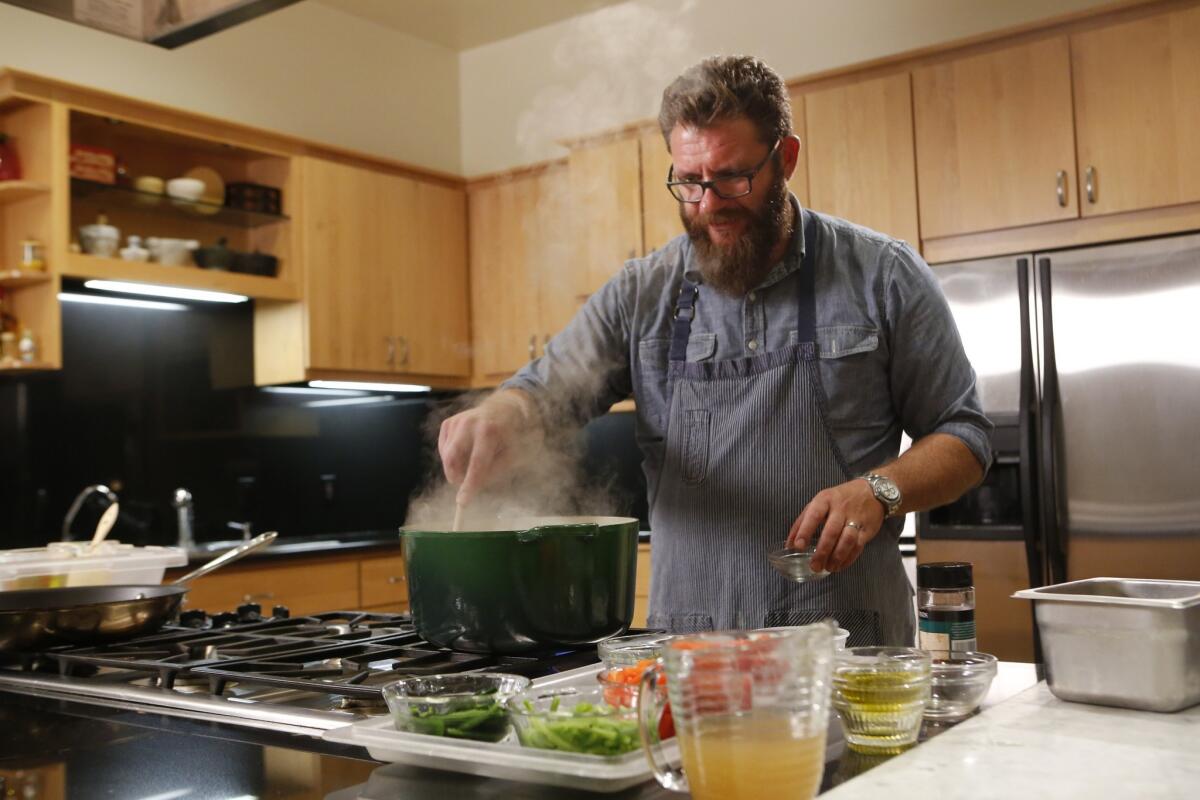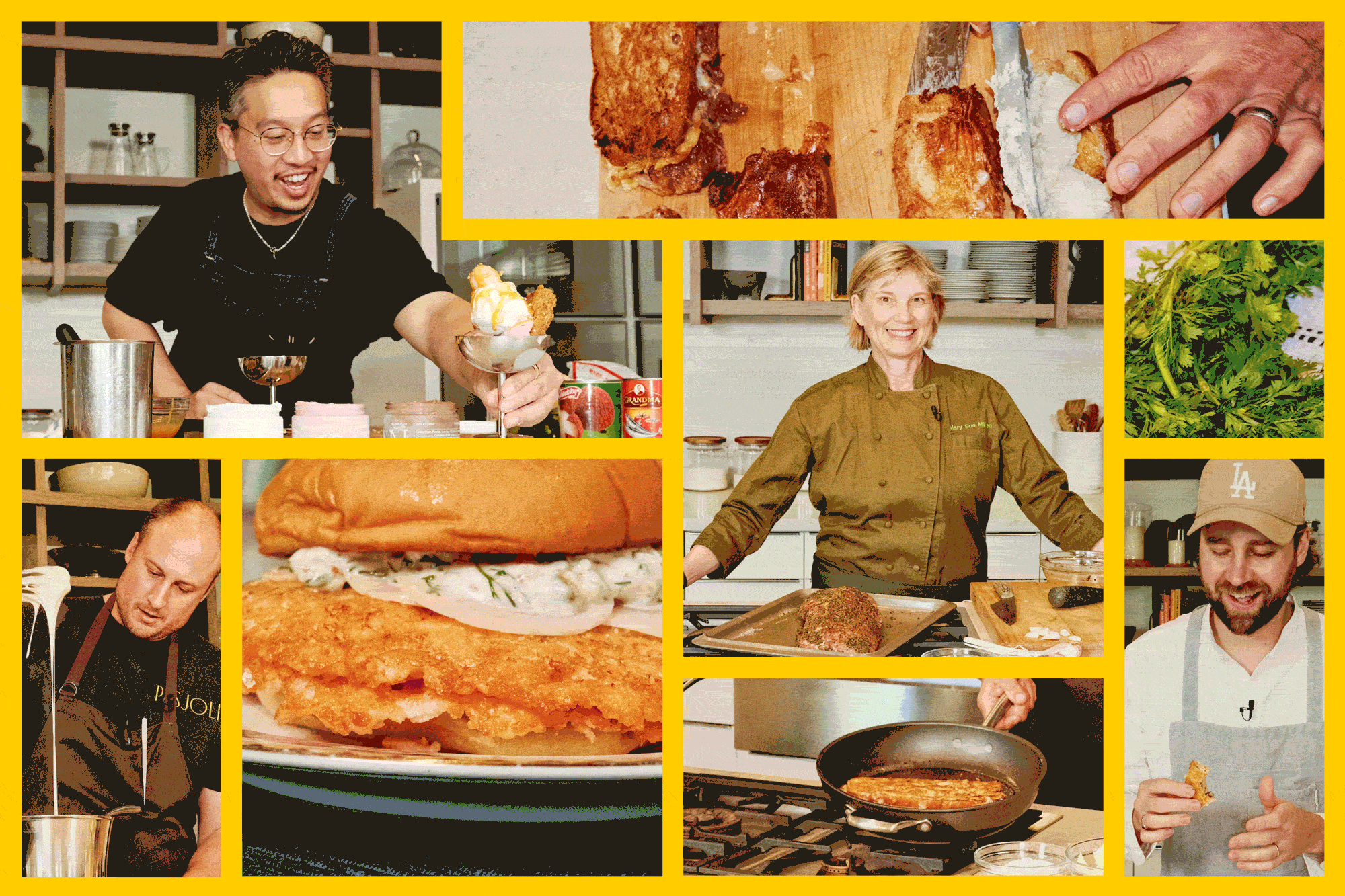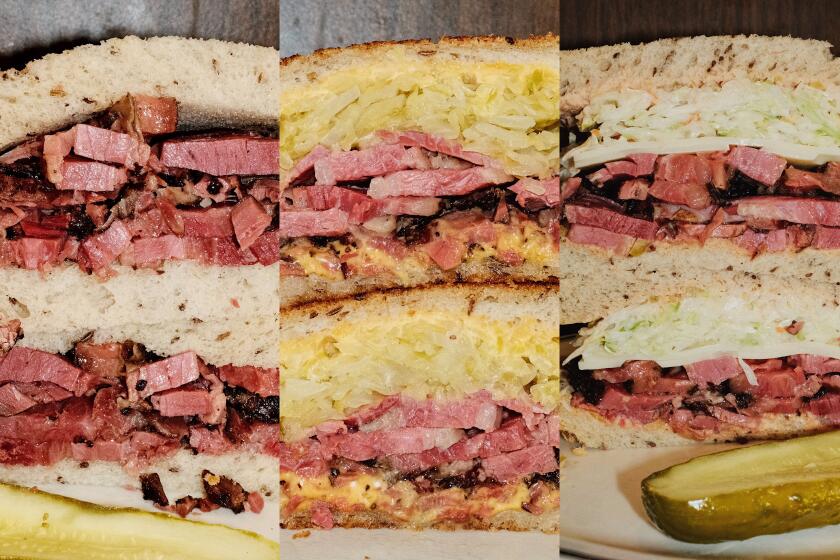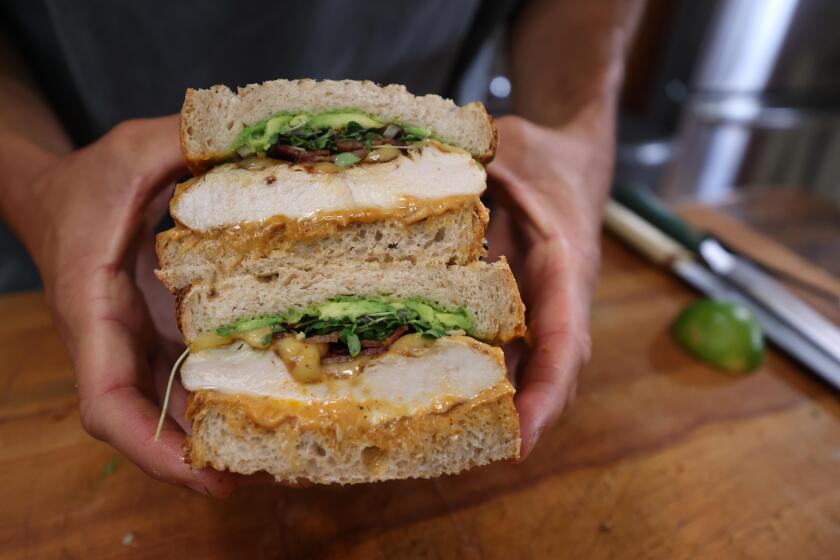Test Kitchen tip: <i>Mise en place</i> ... and a recipe

Mise en place is a French cooking term meaning “everything in its place,” and it’s one of the most important foundations of an efficient and functional kitchen. The principle is simple: Be prepared.
Whenever you plan to work in the kitchen, keep these few steps in mind:
Read the recipe: Read the recipe first, in its entirety. Think about the ingredients and tools you’ll need to have on hand, and make sure you’re comfortable with all of the techniques mentioned in the method before you begin.
Gather, prepare and organize: Once you’ve read the recipe, gather together your ingredients and tools, measuring out the proper quantities and preparing each ingredient (blanching, slicing, mincing, sifting) so it’s ready to be used. Organize your ingredients in the order in which they’ll be used, and clean as you go.
While these steps may sound simple, I can’t emphasize how helpful they are, especially when you’re preparing a recipe for the first time. Nothing can be more stressful for a cook than having to search for an ingredient in the middle of a recipe, or failing to have the proper equipment on hand at the right moment (like a strainer or an ice bath). A little preparation can make things so much more simple -- and fun -- when you’re in the kitchen.
Just few months ago, chef Michael Cimarusti, owner and chef of the restaurants Providence and Connie & Ted’s, visited the Times Test Kitchen to demonstrate his recipe for roasted fillet of white sea bass en escabeche, one of our Top 10 recipes of the year. You can see his mise en place as he prepares the dish in the photo at top. And you can find the recipe below.
Cooking is fun — at least it should be! No matter how long you’ve been in the kitchen, there is always something new to learn, whether it’s a simple twist on an old technique, or a handy tip to save time and energy. In this series of short videos, I demonstrate a variety of kitchen tips, ranging from how to hold a chef’s knife for maximum control to using a spoon to peel fresh ginger. If you have any gadgets, kitchen tips or questions you’d like me to explore, leave a comment or shoot me an email at noelle.carter@latimes.
ROASTED FILLET OF WHITE SEA BASS EN ESCABECHE
Total time: 1 hour, 10 minutes | Serves 8
Note: The fish is brined using a 5% solution, or 50 grams salt (a scant ¿¿ cup) to 600 grams water (a generous 2¿¿ cups) and 400 grams ice cubes (a scant 4 cups), for about 1 hour, then refrigerated until ready to cook. Before cooking, rest the fish at room temperature for about an hour to temper. The method is described in Cimarusti’s first Master Class article on brining.
ESCABECHE SAUCE
4 red bell peppers
2 poblano peppers
2 Anaheim peppers
1/2 cup extra-virgin olive oil, divided
4 small shallots, thinly sliced into rings
3 cloves garlic, thinly sliced
Pinch chile flakes, or to taste
Bouquet garni (a couple of sprigs of thyme, bay leaf and parsley stems tied together)
1/2 cup red wine vinegar
2 tomatoes, peeled, seeded and chopped
1 cup chicken broth (fish or vegetable broth can be substituted)
1. Roast the peppers: Place the red bell, poblano and Anaheim peppers on a rack over the flame of a stove-top burner (the restaurant chars the peppers using a blowtorch). Roast the peppers, turning to quickly char and blacken the skin on all sides (while the skin will char, the flesh should not cook); this will need to be done in batches until all of the peppers are done. When the peppers are cool enough to handle, rub the charred skin off of the peppers using kitchen or paper towels. Seed the peppers and cut each into strips. Set aside.
2. In a saucepot, heat one-fourth cup olive oil over medium heat. Add the shallot and cook, stirring occasionally, until translucent, 3 to 5 minutes. Add the garlic and cook until aromatic, about 1 minute. Add the chile flakes and bouquet garni, along with a pinch of salt, and stir well.
3. Add the red wine vinegar to the pan and increase the heat to high. Cook until the vinegar is reduced completely, 3 to 5 minutes.
4. Add the julienned peppers, stirring to coat them completely with oil. Season with a pinch of salt and reduce the heat. Stir in the tomatoes and season with another pinch of salt. As the tomatoes cook, they will release their juices to form a sauce.
5. Stir in the broth and bring the sauce to a simmer, cooking just to marry the flavors (the vegetables should keep their crunch).
6. Remove from heat and strain the escabeche through a colander. Spread the escabeche vegetables out onto a rimmed baking sheet to cool quickly (refrigerate if making a day in advance). Place the sauce back in the pan over medium-high heat and reduce by half. Remove from heat and, using an immersion blender, slowly emulisfy the sauce while adding the remaining one-fourth cup olive oil.
7. Cool the sauce completely and refrigerate until needed. The sauce is best made a day in advance to give the flavors time to marry.
ROASTED FILLET OF SEA BASS EN ESCABECHE
3 1/2 pound fillet white sea bass or king salmon, skin off and bloodline removed, brined (see note)
Salt
Espellette powder (smoked or sweet paprika, or cayenne pepper can be substituted)
Oil
2 tablespoons butter, plus ¿¿ cup (¿¿ stick) softened salted butter, divided
2 cloves garlic
1 branch thyme
Escabeche sauce
2 tablespoons roughly chopped Italian parsley
Lemon, if needed
Red wine vinegar, if needed
1. Heat the oven to 300 degrees. Season the fish on both sides with a light sprinkling of salt and espellette pepper.
2. Over medium heat, warm a sauté pan large enough to hold the fillet of fish. Add enough oil to coat the surface of the pan and add 2 tablespoons of butter. When the butter starts to foam, carefully place the fillet in the pan. Add the garlic cloves and branch of thyme.
3. Cook the fish over medium heat until it is light golden in color, 3 to 4 minutes. Be very careful as the fish cooks that the pan does not get too hot and the butter does not brown too much; the fish should be tender, and heat that is too high will toughen the fillet.
4. Carefully flip the fillet, using 2 fish spatulas if needed. Cook an additional 3 to 4 minutes. As the fish cooks, gently baste it with the fat in the pan, spooning over the oil and butter to keep the fish moist as it cooks.
5. Remove the fish from the pan to a cooling rack placed on a rimmed baking sheet. Set the fish aside to rest for 3 minutes, then take the internal temperature with a thermometer. The internal temperature should read 118 degrees. If the temperature is too low, brush the fish with the softened butter and place the fish in the oven for 3 minutes. Remove the fish from the oven and rest again for 3 minutes before taking the temperature. Repeat this process until the fish reaches 118 degrees.
6. Strain the cooking juices from the pan, discarding the garlic and thyme and reserve for sauce.
7. Before serving the fish, reheat the escabeche, adding a touch more olive oil and a bit of lemon juice and/or red wine vinegar to enhance the flavors, along with the chopped parsley. Reheat the sauce, checking for seasoning and flavoring.
8. To serve, slice the warmed fish into 8 portions. Place the escabeche on a warmed serving platter and arrange the fish portions on top. Spoon a bit more over the fish. Serve the cooking sauce at the table.
Each serving: Calories 449; Protein 41 grams; Carbohydrates 10 grams; Fiber 3 grams; Fat 27 grams; Saturated fat 8 grams; Cholesterol 110 mg; Sugar 4 grams; Sodium 585 mg
Love cooking as much as I do? Follow me @noellecarter
More to Read
Eat your way across L.A.
Get our weekly Tasting Notes newsletter for reviews, news and more.
You may occasionally receive promotional content from the Los Angeles Times.











